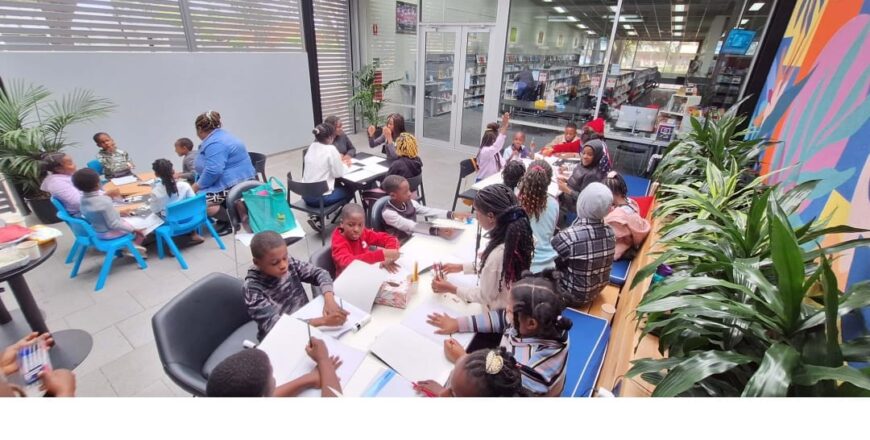ENGLISH- YEAR 2

- Description
- Reviews
- 1Text Connection: The DeepPreview 40 minutes
Introduction:
1. Begin by reading The Deep aloud to the class.
2. After reading, ask students to share what they noticed about the characters, setting, and events.
3. Write down student responses on the board under headings: Characters, Setting, Events.
- 2Narrative text: Cat and rabbitPreview 40 minutesThis lesson is locked because you haven't completed the previous one yet. Finish the previous lesson to unlock this one.
Introduction:
1. Begin by introducing the Cat and Rabbit story.
2. Discuss what students know about stories they’ve read: “What happens first in a story? What do we learn about the characters?”
3. Read the Cat and Rabbit story aloud to the class.
4. After reading, ask the class to think about the characters, the setting, and the main problem in the story.
- 3Reading aloud: Amy's SongPreview 40 minutesThis lesson is locked because you haven't completed the previous one yet. Finish the previous lesson to unlock this one.
Introduction:
1. Introduce the text Amy's Song by showing the cover and asking students to predict what the story might be about.
2. Write down key vocabulary words from the text that might be unfamiliar (e.g., “melody,” “harmony,” etc.). Review these words with flashcards and discuss their meanings.
- 4Written Report: Excursion to Kings ParkPreview 40 minutesThis lesson is locked because you haven't completed the previous one yet. Finish the previous lesson to unlock this one.
Introduction:
1. Start by showing pictures from the excursion to Kings Park. Ask students to recall their experiences: “What did we see? What activities did we do?”
2. Explain that today they will be writing a recount, which is a way to tell about something that has already happened.
3. Discuss the structure of a recount:
o Orientation: Who was there? Where and when did the excursion take place?
o Events: What happened during the excursion?
o Conclusion: How did you feel about the excursion?
- 5Digital Presentation: EmusPreview 40 minutesThis lesson is locked because you haven't completed the previous one yet. Finish the previous lesson to unlock this one.
Introduction:
1. Begin by asking students what they know about emus. List their ideas on the board.
2. Introduce the task: “We are going to learn more about emus, and you will create a digital presentation to show what you have learned.”
3. Discuss key questions for research:
o What do emus look like?
o Where do they live?
o What do they eat?
o What are some interesting facts about emus?
- 6Descriptive poems: MixturesPreview 40 minutesThis lesson is locked because you haven't completed the previous one yet. Finish the previous lesson to unlock this one.
Introduction:
1. Introduce the idea of descriptive poetry by sharing an example of a simple poem that describes food or nature.
2. Explain how poets use words to create a picture in the reader’s mind by describing how something looks, feels, tastes, or smells.
3. Write the words “nouns,” “verbs,” and “adjectives” on the board. Ask students to think of examples related to food (e.g., apple, chop, sweet).
